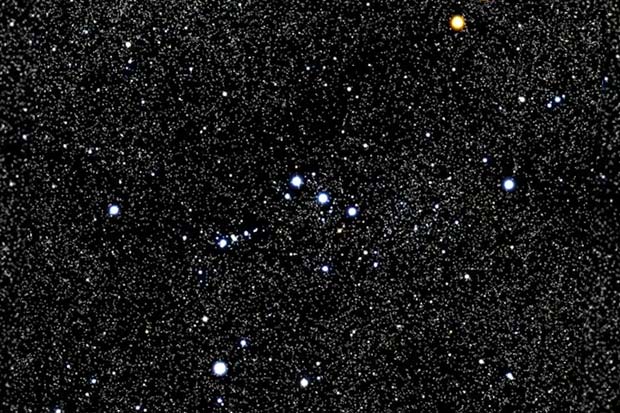Orion Transformed: Familiar Constellation Will Shift Over Millennia (Video)
Humans observing the sky as they walked out of Africa millennia ago would have seen different night skies than the ones people see today. And humans in the far future will see another, different celestial landscape.
A video from the European Space Agency based on data from the Gaia mission and the Hipparcos satellite shows what the Orion constellation will look like 450,000 years from now. The piece is part of a larger video that shows how the positions of more than 2 million stars will change over the next 5 million years.
Stars on the celestial dome may appear to be fixed in position relative to each other, but they aren't motionless , even though they seem that way on any given night. They are just so far away that it takes decades — and more often centuries — for them to move even a small amount from an Earthling's point of view.
Their position as seen from Earth is measured using a coordinate system projected on the sphere of the sky, so that the distance from one horizon to the other is 180 degrees. The stars' movement in the sky is called proper motion and is measured in arc seconds (where an arc second is 1/3600th of a degree) per year, or sometimes per century. An arc second is about 1/1,800th the diameter of the moon as seen from Earth. [How the Gaia Galaxy-Mapping Satellite Works (Infographic)]

To put that in perspective, the star with the fastest proper motion across the sky is Barnard's Star, which located is some 6 light-years from Earth and has a proper motion of 10.3 arc seconds per year, according to data from the ESA's Hipparcos mission published in 2007. Barnard's star will travel a distance equal to the width of the full moon in about 180 years.
In Orion, the brightest stars move much more slowly than Barnard's star, as they are on average hundreds of light-years distant from Earth; the red star Betelgeuse moves only 0.026 arc seconds every year, according to Hipparcos data. Over 10,000 years that adds up to 0.07 degrees, a fraction of one's little finger held at arm's length, which is about 1 degree.
The ESA video was created using Gaia and Hipparcos data on the proper motions of stars, which was then used to reconstruct the stars' movements in the past and project them into the future. In the complete video, users can zoom in on a particular region to see how it changes over time. Betelgeuse, which currently marks Orion's left shoulder as seen from Earth, moves out of the field of view (which is 20 degrees by 40 degrees) relatively quickly, or in about 100,000 years.
Get the Space.com Newsletter
Breaking space news, the latest updates on rocket launches, skywatching events and more!
Meanwhile, the classic shape of Orion's belt remains relatively stable, as do the positions of Rigel, Saiph and Bellatrix, the stars that mark Orion's right shoulder, left foot and right foot.
The Hyades cluster, currently in the constellation Taurus, seems to move from the right side of the frame toward the upper left, swinging closer to Orion as Taurus' brightest star, Aldebaran, moves roughly south. Orion, and many of the familiar constellations that have guided ships and populated stories for thousands of years, will be completely reshaped in the future, just as they were in the past.
Follow Jesse Emspak on Twitter @Mad_Science_Guy. Follow us on Twitter @Spacedotcom. We're also on Facebook & Google+. Original story on Space.com.
Join our Space Forums to keep talking space on the latest missions, night sky and more! And if you have a news tip, correction or comment, let us know at: community@space.com.

Jesse Emspak is a freelance journalist who has contributed to several publications, including Space.com, Scientific American, New Scientist, Smithsonian.com and Undark. He focuses on physics and cool technologies but has been known to write about the odder stories of human health and science as it relates to culture. Jesse has a Master of Arts from the University of California, Berkeley School of Journalism, and a Bachelor of Arts from the University of Rochester. Jesse spent years covering finance and cut his teeth at local newspapers, working local politics and police beats. Jesse likes to stay active and holds a fourth degree black belt in Karate, which just means he now knows how much he has to learn and the importance of good teaching.
